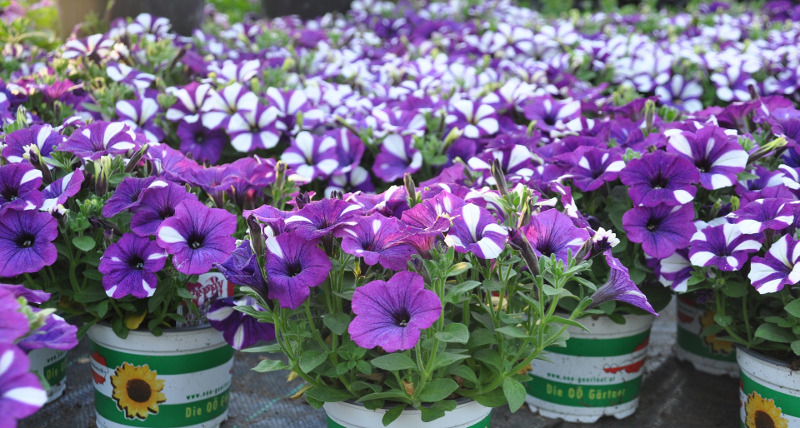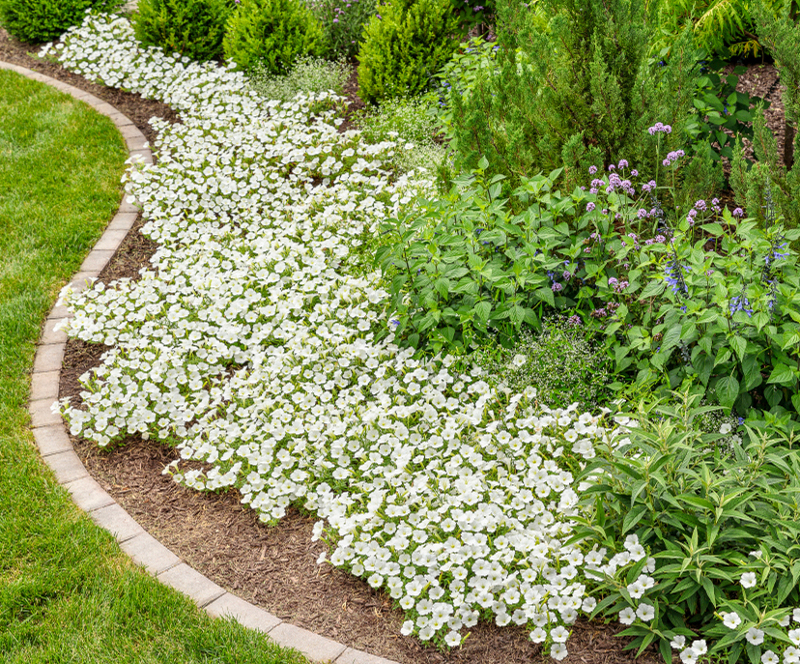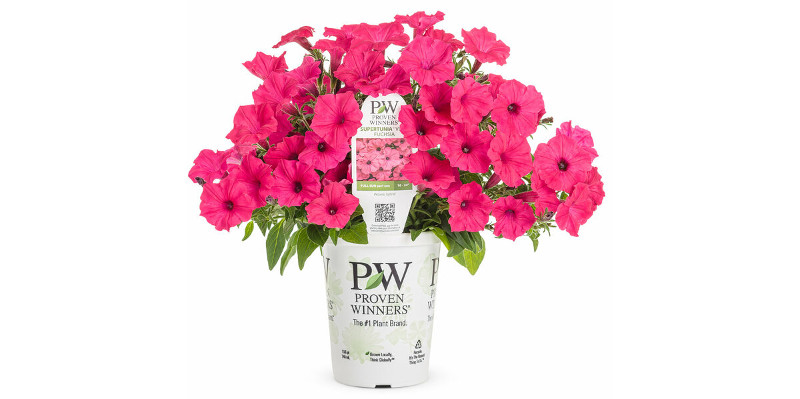Petunias provide vibrantly, colorful blooms all summer long, making them a popular choice with gardeners looking to dress up a planter, border, or hanging basket. The bell-shaped flowers are available in a variety of colors, some types even feature variegated flowers, and the trailing tendencies mean the blooms will spill over the edge of a container or easily fill in a bed.

Petunias like lots of sunlight, and with some easy and routine maintenance throughout the summer, the plants will look their best. Petunias grow as perennials in USDA zones 9 through 11, and they are typically grown as annuals in colder zones. Find out how to grow healthy Petunia plants that bloom all season long.
What You Need To Plant Petunias
- Shovel
- Compost or manure
- Garden spade
Where to Plant Petunias
Petunias make excellent container plants and look fabulous in a hanging basket but can still do great when planted in the ground. Wherever you grow Petunias, make sure there is a lot of direct light. Petunias need at least 6 hours of sunlight exposure each day. Plants that receive less light may not bloom or have far fewer flowers.

Well-draining soil high in organic content like compost or manure is best and will promote lots of flowers and growth. Petunias like to dry out between watering, so well-draining soil lets the plant soak up moisture without sitting in standing water.
Petunia Spacing
There are many different varieties of Petunia, so double-check the size to make sure it will work for your space, but the height generally varies from 6 inches to 18 inches. Again, it depends on the type, but Petunias can spread out anywhere from 18 inches to 4 feet. Space Petunias about 1 foot apart from other plants and buildings when planting, and you’ll have a lush carpet of greenery and blooms in no time.

Steps To Plant Petunias
Select a sunny spot and dig a hole at least twice the size of the root ball. Mix manure or compost into the soil to get the plant off to a good start. A Petunia should be planted, so the top of the roots are just below the ground's surface. Water newly planted Petunias right away and continue to water each day for the first 1 to 2 weeks. Plan to water once a week throughout the rest of the growing season.
Step 1 - Select a sunny location
Step 2 - Dig a hole at least twice the size of the root ball
Step 3 - Amend the soil with compost or manure
Step 4 - Plant the Petunia, so the top of the root ball is even with the ground
Step 5 - Drench the soil with water
When to Plant Petunias
Plant Petunias in the spring after there is no longer a chance of frost. Any time of day is good to plant Petunias, but make sure to water the plant right away to help keep it hydrated and protect against bright sunlight and warm temperatures.

Transplanting Petunias
It is generally best to plant or relocate Petunias in the spring. Still, you can move the plants throughout the growing season as long as you water the Petunia immediately after replanting. The roots usually grow to a depth of about 5 inches, but if the plant is not watered enough, the roots may grow more shallow, and growth may be stunted. Regular, drenching watering will promote deeper root growth and healthier plants.
Petunias are grown as annuals in most areas, so splitting or dividing the plants is unnecessary. Petunias can be soil propagated, and cuttings taken in the fall will be ready to go outside come spring.
 |
Author Alison Cotsonas - Published 12-16-2021 |
